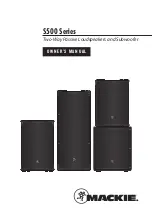
Manual 0-2962
4-9
OPERATION
D. Lead Angle
The angle between the torch and workpiece depends on
the output current setting and torch travel speed. At 80
amps, the recommended lead angle is 35°. At a lead angle
greater than 45° the molten metal will not be blown out of
the gouge and may be blown back onto the torch. If the
lead angle is too small (less than 35°), less material may be
removed, requiring more passes. In some applications,
such as removing welds or working with light metal, this
may be desirable.
35˚
Workpiece
Torch Head
Standoff Height
1/8 - 1/4"
A-00941
Gouging Angle and Standoff Distance
E. Standoff Distance
The tip to work distance affects gouge quality and
depth. Standoff distance of 1/8 - 1/4 inch (3 - 6 mm)
allows for smooth, consistent metal removal. Smaller
standoff distances may result in a severance cut rather
than a gouge. Standoff distances greater than 1/4
inch (6 mm) may result in minimal metal removal or
loss of transferred main arc.
F. Slag Buildup
Slag generated by gouging on materials such as car-
bon and stainless steels, nickels, and alloyed steels,
can be removed easily in most cases. Slag does not
obstruct the gouging process if it accumulates to the
side of the gouge path. However, slag build - up can
cause inconsistencies and irregular metal removal if
large amounts of material build up in front of the arc.
The build - up is most often a result of improper travel
speed, lead angle, or standoff height.
Содержание SL100 HAND TORCH
Страница 4: ......
Страница 10: ...GENERAL INFORMATION 1 6 Manual 0 2962...
Страница 16: ...GENERAL INFORMATION 1 6 Manual 0 2962...
Страница 38: ...OPERATION 4 10 Manual 0 2962...
Страница 44: ...SERVICE 5 6 Manual 0 2962...
Страница 62: ...APPENDIX A 2 Manual 0 2962 This page intentionally blank...
Страница 90: ...APPENDIX A 30 Manual 0 2962...
















































